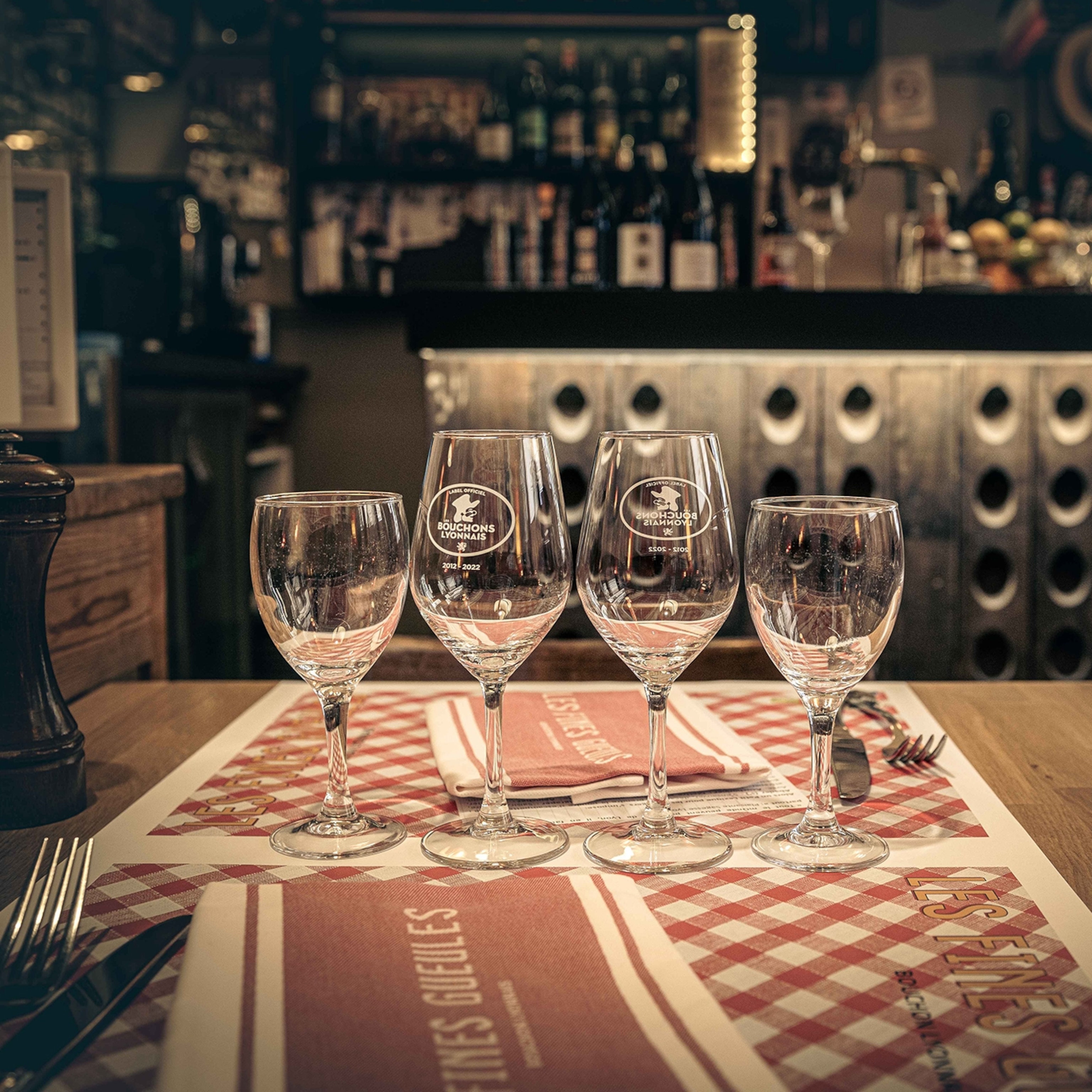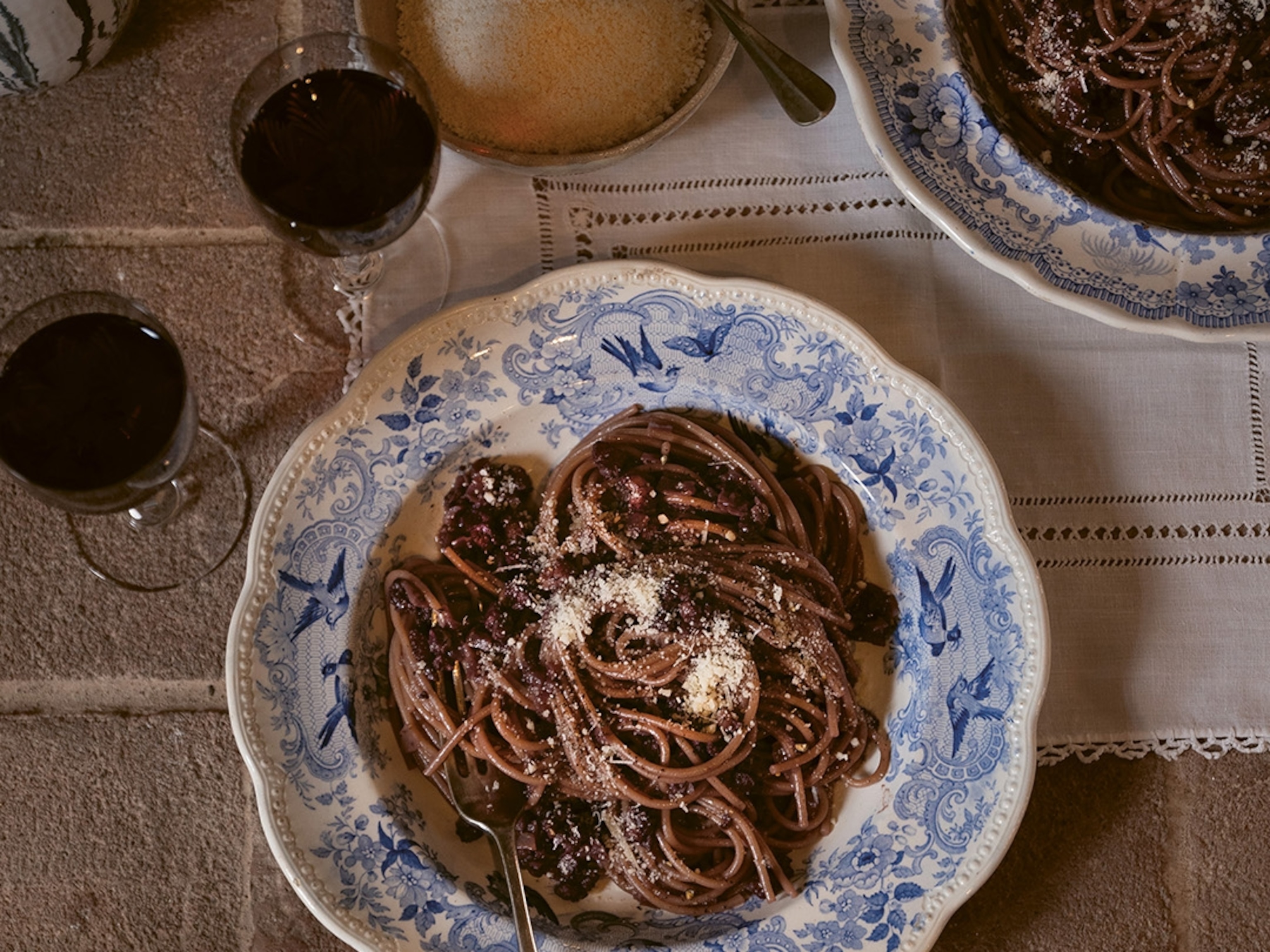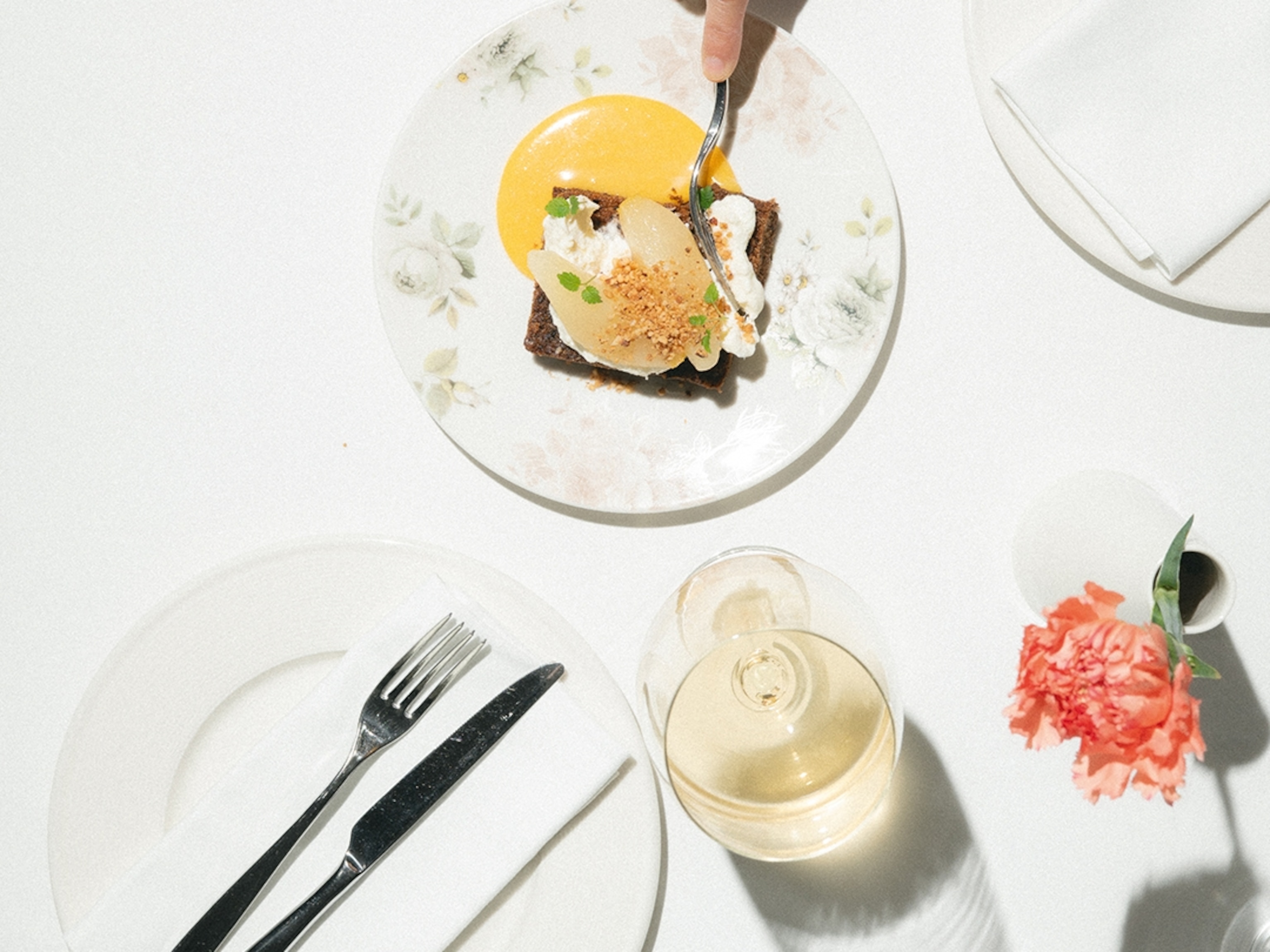
Brazilian chef Manoella Buffara on her pioneering career and culinary heritage
Latin America's Best Female Chef 2022 Manoella Buffara - aka Manu - discusses her eponymous cookbook, her female-led social project and being the only woman in the kitchen.
How has your heritage influenced your food?
My father’s family were from Spain and Italy. When they came to Brazil during the Second World War, the first place they stopped in was a port city called Paranaguá. It’s where you’ll find the freshest fish and shellfish. At my grandparents’ home, I learned different ways of cooking with seafood. My mum’s side came from Lebanon; from them, I learned to use spices like za’atar and cumin, and different grains. Food is very important in the Arab community, so growing up, we’d sit at the table and talk and eat. That’s something I continue to do, not just with my kids but with the community at large, too. We used to live in the countryside, so I have a strong connection with farming and animals. I understood the importance of growing your own food and knowing how the process works. This is what’s brought me to what I do now.
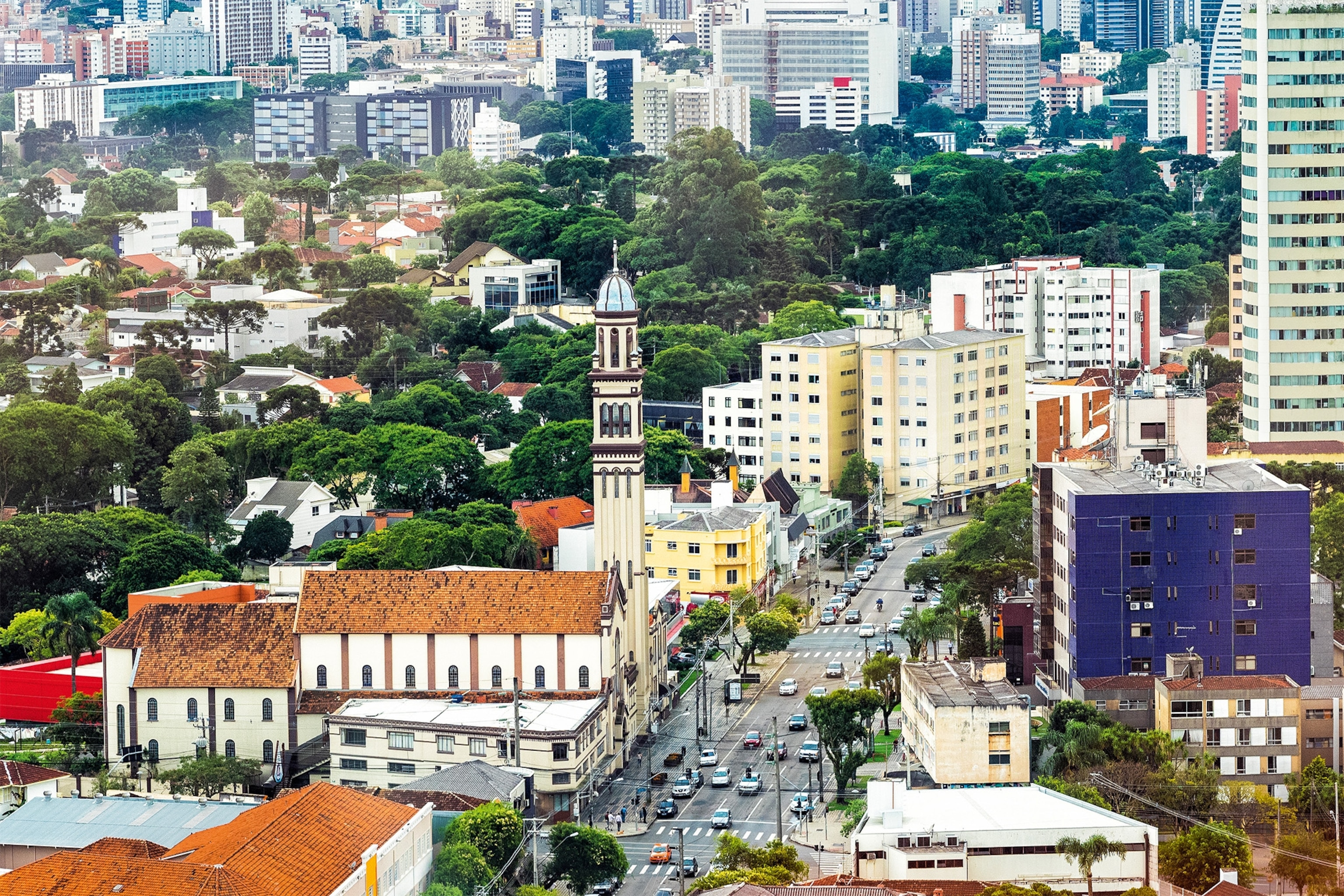
Has the way you cook changed since you became a chef?
Of course. When I started my career as a chef, I was 17 years old. We had a lot of good food at home with fresh ingredients, but when you’re reading and learning, you begin to understand the type of food you want for your body. We try to use a lot of vegetables and less salt now. It’s about something that makes you happy and not just something that you put in your mouth.
What’s been your experience as a female chef?
When I lived in Italy [20 years ago], I was working in kitchens where there were only men. It was super hard; people weren’t always polite. A female chef had to work three times harder than a man for the same position, you know? But I learned a lot; I learned to believe in myself. Now I always say I cook to change people, to change my city, to change the community — but the most important thing is I cook for myself. Things have changed a lot [in the past two decades]. In South America, at least, we have more understanding in the kitchen, more respect and more female chefs leading the way. But it’s something we’re still working on.
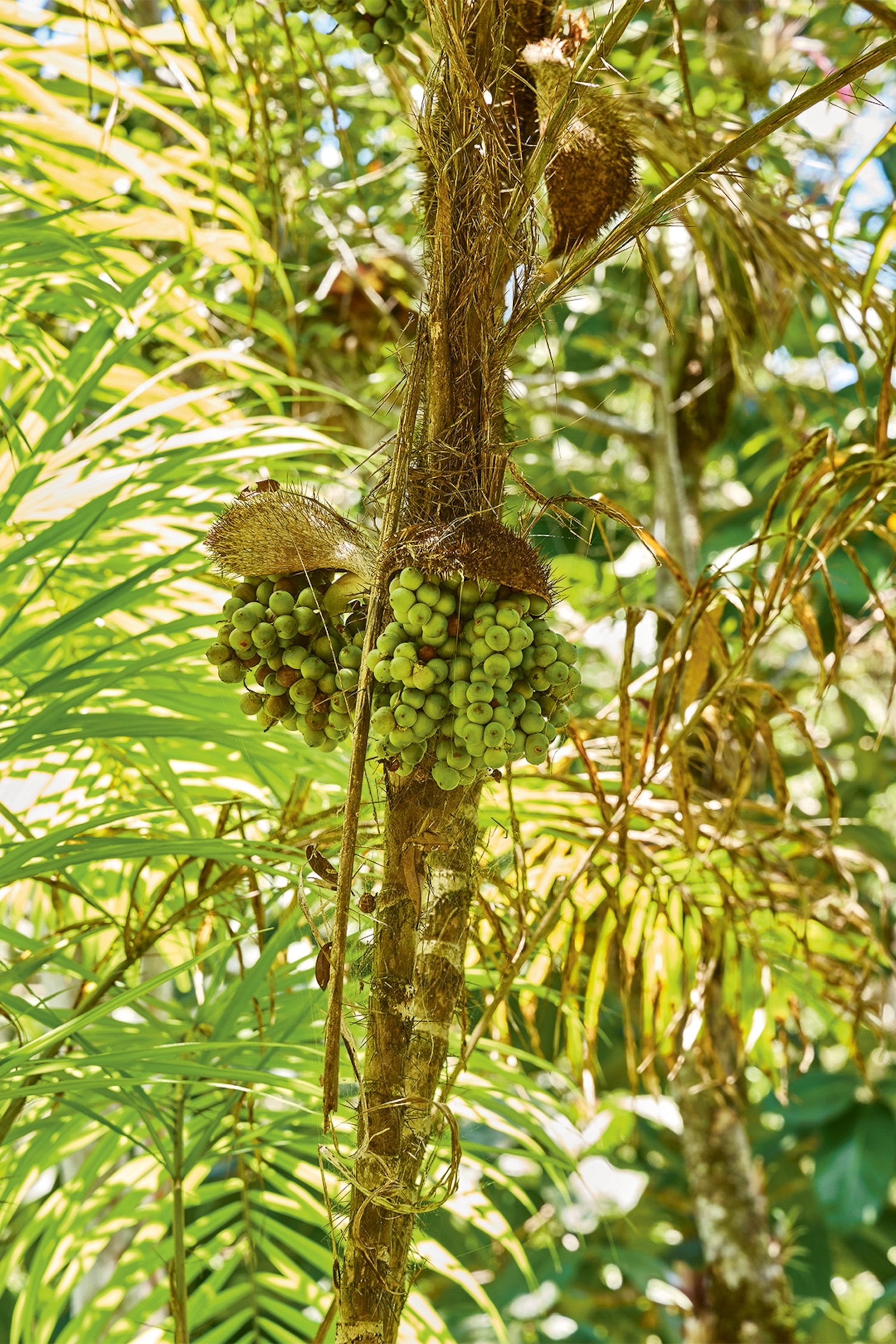
Do you have any favourite ingredients?
Honey from Brazil’s native bees — I have it on every menu. In my city [Curitiba], there are 20 to 25 different types. Some of the honeys are acidic, while some of them are floral, so they can be used in different ways. I use one in a vinaigrette to go with scallops, for example. It’s important because it’s food from our land. Before, when you went into a supermarket, you could find honey from all over the world but not Brazil. That’s changing; we’re becoming proud of our food.
What do you cook at home?
I get Sundays and Mondays off. For Sunday lunch, I always choose a menu that my kids can make with me. It can be rice and seafood, or chicken with fresh pasta where they’ll be able to touch the vegetables or roll out the pasta. It’s part of our Sunday lunch experience, because I want them to understand how important it is to choose the food you put in your body. And on Mondays, I make a fish sandwich that my kids and my husband love. I just grill the fish and then add some homemade mayonnaise and vegetables.
You also cook for the homeless — how did that start?
Giving back has always been important for me — it’s the reason I helped to set up urban gardens around Curitiba. Then in 2019, I created Instituto Manu Buffara for all my social projects, and one of these was the Mulheres do Bem (‘Women for Good’). It’s a group of 19 women, including chefs and journalists, and we cook between 250 and 300 meals once a week. We work with a nutritionist to create a healthy menu that includes things like beans, quinoa, salad, meat and fish, and it comes with fruit and juice. We also do a big community event twice a year where we bring in doctors, dentists and lawyers; we set up these little houses where people can come and ask for help. There are also people who can cut their hair or speak about nutrition. Then at the end, we give them a box with 80kg of healthy food in to take away.
Manu: Recipes and Stories from My Brazil, by Manoella Buffara, is published by Phaidon (£39.95).
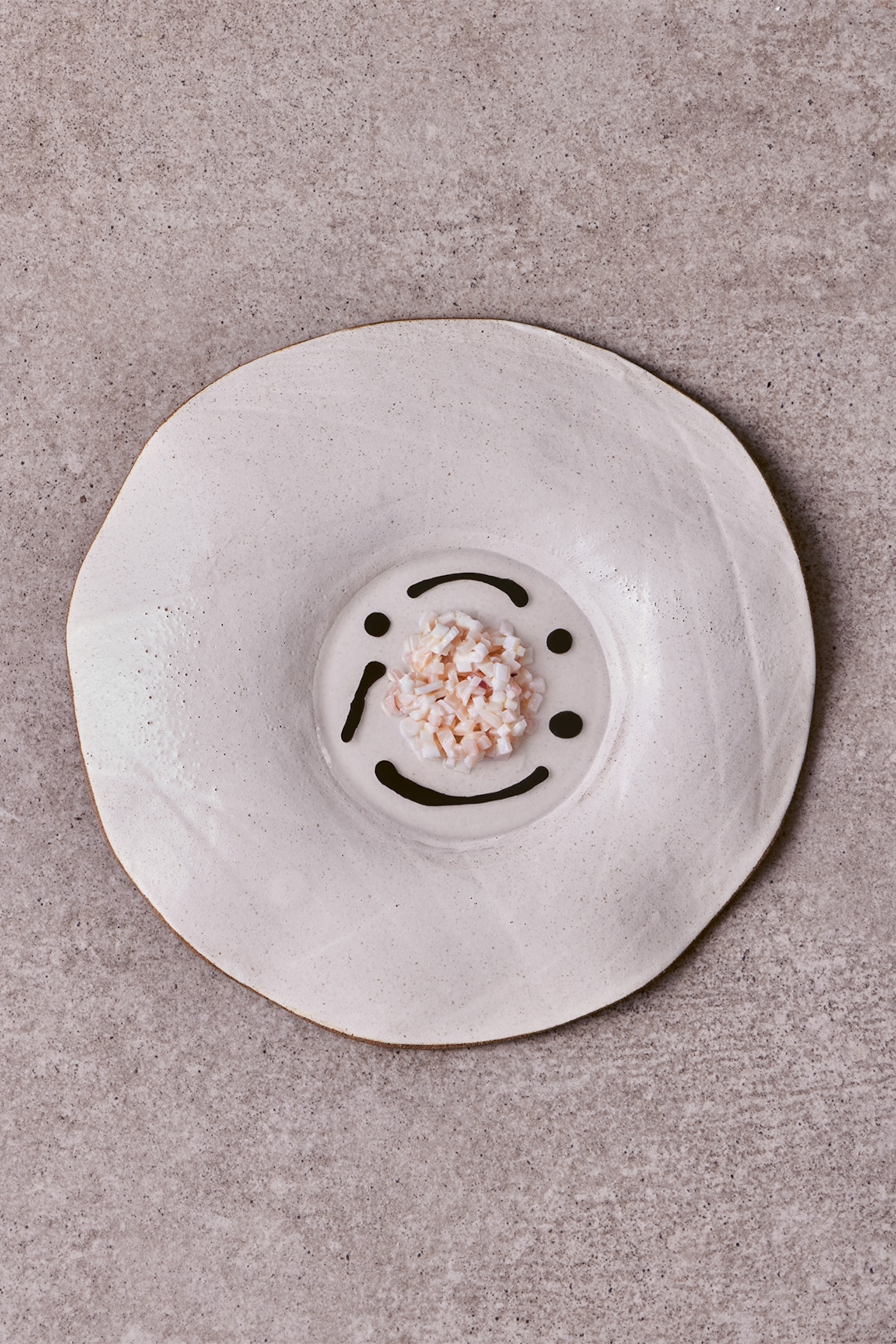
Squid and young coconut
My family loves to drink coconut water — I always have litres of it at home. When we’re at the beach and drink it fresh, I always ask that the coconut be cut in half, so I can eat the flesh with a spoon. It has a unique texture that reminds me of seafood; I had that idea in mind when I created this dish. This recipe will give you more creamy fish stock than you need — it’ll keep for up to three months in the freezer and can be used in other dishes such as risottos and soups.
Serves: 4
Takes: 2 hr 45 mins
Ingredients:
For the creamy fish stock
80ml vegetable oil
30g ginger, thinly sliced
7g ginger, grated
500g grouper or yellowtail with bones
For the coconut base
180ml fresh coconut water
15g tapioca pearls
For the squid ink salsa
100ml olive oil
40g red onion
1 green chilli pepper
1 Roma tomato, chopped
40g squid ink
30ml honey
For the squid tartare
200g mini squid, heads only
120g fresh young coconut meat, cut into 1cm cubes
1 lemon, zested
Method
1. Start by making the creamy fish stock. Heat the oil in a large saucepan set over medium heat. Add the ginger and cook for 3 mins, then add the fish and saute for 30 mins, or until slightly browned. Break up the fish into small pieces. Add 2 litres boiling water, cover and cook for 1 hr 5 mins. Strain the stock with a fine strainer and discard any small bones. Set aside.
2. To make the coconut base, combine the coconut water and tapioca pearls and cook in a saucepan set over a medium heat for 20 mins. Strain, then refrigerate until needed.
3. Meanwhile, make the squid ink salsa. Heat the olive oil in a frying pan set over medium heat. Add the onion and saute for around 15 mins until golden. Add the chilli and tomato and bring to a boil. Add the squid ink and 50ml of the creamy fish stock and boil for 10 mins, then pass through a sieve. Stir in the honey. Refrigerate until needed.
4. Start on the squid tartare by separating the squid’s head from the body. Blanch in hot water for 40 seconds, then transfer to a bowl of ice water. Cut into 1cm cubes then tip into a bowl and combine with the coconut. Season with salt, pepper and the lemon zest, mixing well.
5. To serve, place some squid tartare in the centre of each plate. Spoon the coconut base around it and finish with a few drops of the squid ink salsa.
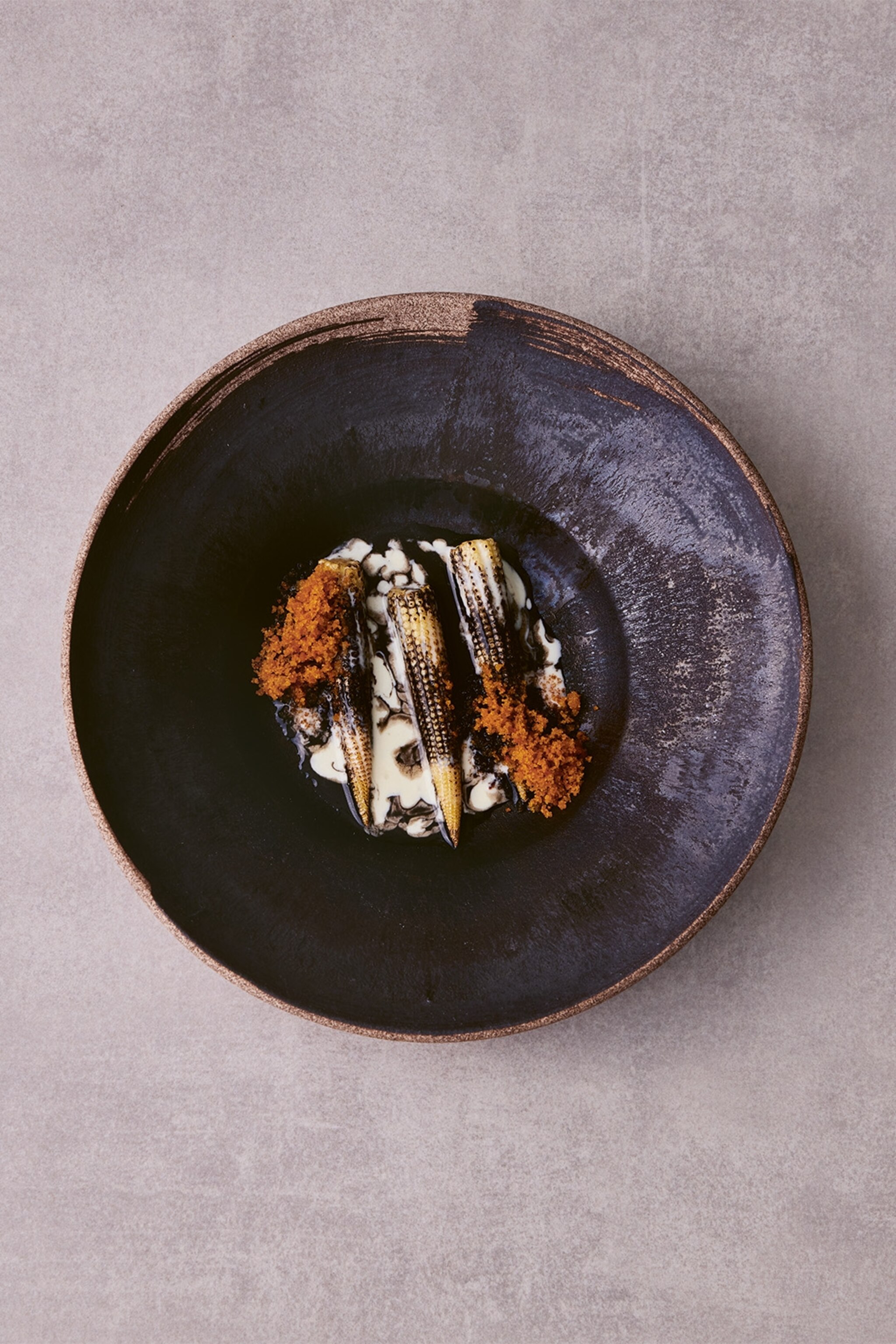
Baby corn, black garlic and bottarga
Baby corn has a sweet, delicate flavour and doesn’t need fussy preparation. The black garlic enhances the delicate taste and nuances of the corn, while the bottarga crumb brings an element of surprise to the dish — and both add a hit of umami.
Serves: 4
Takes: 1 hr
Ingredients:
For the black garlic salsa
15g white miso paste
10g black garlic
10ml balsamic vinegar
7ml sunflower oil
5ml squid ink
5ml balsamic glaze
1g lemon zest
For the bottarga crumb
100g bottarga
25g unsalted butter
To serve
50g labneh
200g baby corn
20ml olive oil
fleur de sel, for sprinkling
Method
1. Put all the ingredients for the black garlic salsa in a blender and blend well. Set aside.
2. Start on the bottarga crumb. Place a frying pan over a high heat until hot, then add the bottarga and butter and brown for 5 mins on each side. Reduce the temperature to low and break up the bottarga little by little, gradually drying it out, until crispy. Leave on a low heat for at least 20 mins, stirring constantly, until the bottarga is completely dry. Transfer to a food processor and blitz until finely ground.
3. Lightly heat the black garlic salsa in a saucepan over medium-low heat. In a separate saucepan, heat the labneh until it liquifies.
4. Heat a cast-iron frying pan over a medium-low heat. Cook the baby corn for 3 mins on each side until lightly charred. Add the olive oil and saute quickly.
5. To serve, scoop a small amount of black garlic salsa onto the centre of each plate. Arrange the baby corn on top. Drizzle a spoonful of liquid labneh over the black garlic salsa. Top the baby corn with the bottarga crumb and sprinkle with the fleur de sel.
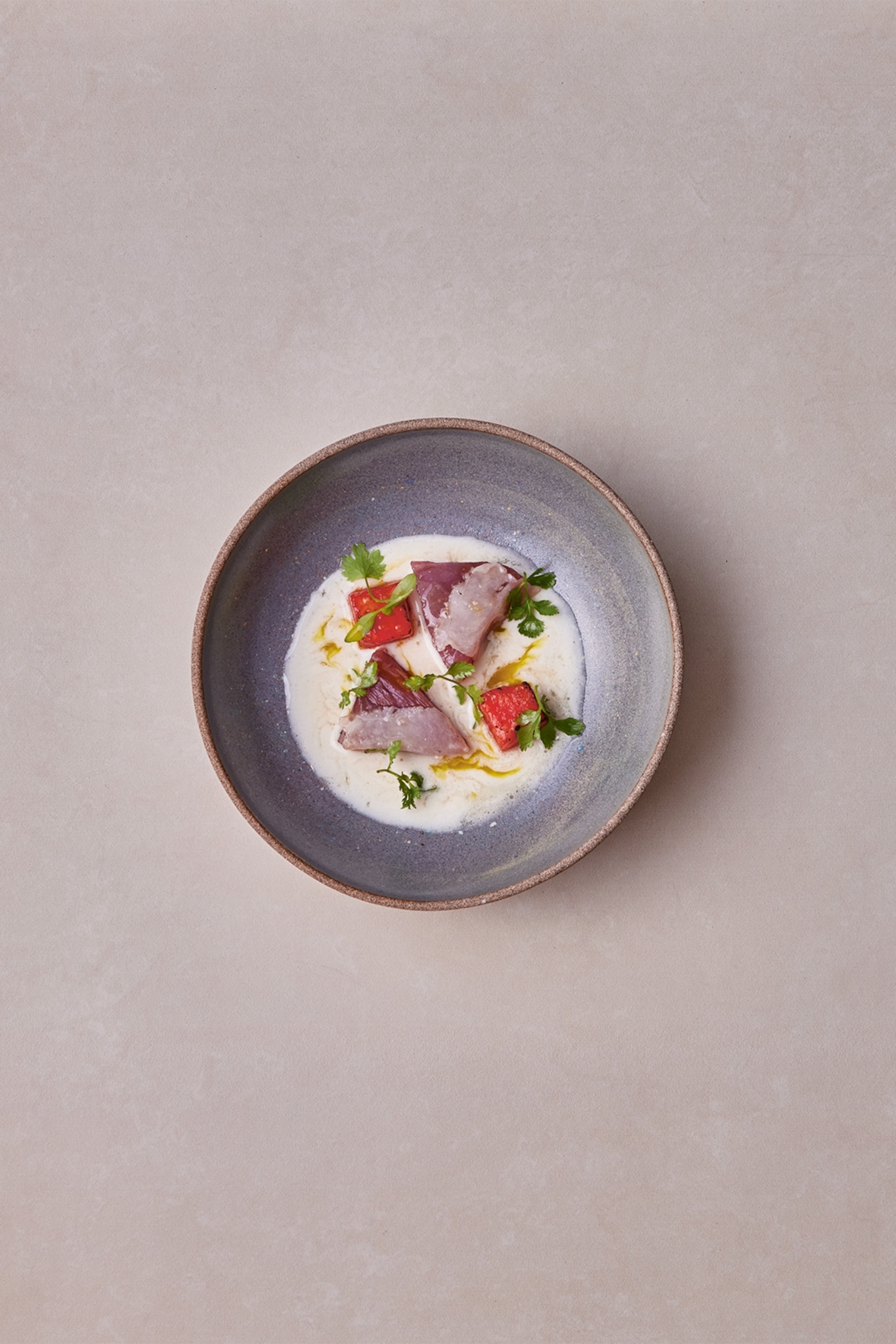
Tuna, lard and watermelon
My husband makes an excellent barbecue. Sunday is usually when he does the main courses, and I take care of the starters and side dishes. Sometimes when he is preparing the meat, I grill vegetables and fruit — barbecued watermelon is one of my favourites. I knew I would make a dish like this one day; the moment came when I received a very good fatty tuna loin.
Serves: 4
Takes: 40 mins
Ingredients:
200g fatty tuna loin
8 thin slices lard, each one roughly 6cm x 4cm in size and less than ½cm thick
500g watermelon, cut into squares around 4cm x 4cm and 1cm thick
30ml olive oil
coriander, for garnish
For the white sauce
400g Brazil nuts
200ml coconut water
50ml honey
zest of 1 lemon
For the tucupi oil
100ml olive oil
30g tucupi (or mushroom dashi)
Method
1. Cut the tuna loin into 8 equal-sized slices. Arrange them on a piece of muslin, at room temp, and top each one with a slice of lard.
2. Place a griddle pan over a high heat. Brush the watermelon slices with the olive oil and place on the pan. Griddle (or barbecue) for 40 seconds on each side.
3. To make the white sauce, add the Brazil nuts, water, coconut water, honey and 600ml water to a high-speed blender for 15 mins. Pass through a fine sieve or muslin and season with salt and the lemon zest.
4. To make the tucupi oil, combine the olive oil and tucupi or mushroom dashi in a small bowl and mix well.
5. Spread a little of the white sauce on four plates, arrange 2 slices of tuna with lard on top, and the griddled watermelon slices alongside. Drizzle with a little tucupi oil, then garnish with the coriander.
To subscribe to National Geographic Traveller (UK) magazine click here. (Available in select countries only).
